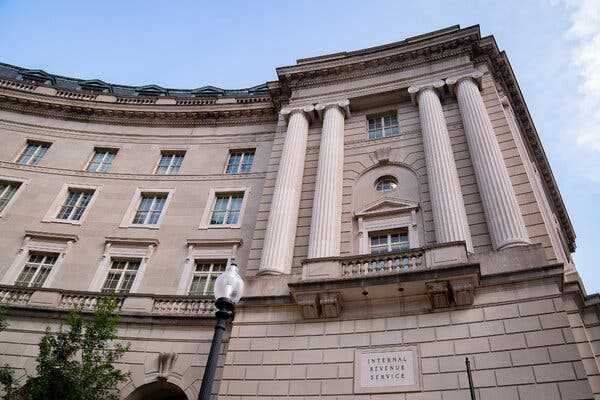The tax agency is opening examinations into large hedge funds, private equity groups, real estate investors and law firms.
- Share full article

The Internal Revenue Service is making a push to focus on wealthier taxpayers in 2024 in an attempt to collect large sums that are owed to the federal government.
The Internal Revenue Service has started using artificial intelligence to investigate tax evasion at multibillion-dollar partnerships as it looks for ways to better police hedge funds, private equity groups, real estate investors and large law firms.
The announcement on Friday demonstrated how a more muscular I.R.S. is using some of the $80 billion allocated through last year’s Inflation Reduction Act to target the wealthiest Americans and tackle the kinds of cases that had become too complex and cumbersome for the beleaguered agency to handle.
The agency’s new funding is intended to help the I.R.S. raise more federal revenue by cracking down on tax cheats and others who use sophisticated accounting maneuvers to avoid paying what they owe. But the allocation has been politically contentious, with Republicans claiming that the I.R.S. will use the funding to harass small businesses and middle-class taxpayers. Earlier this year, Republicans succeeded in clawing back $20 billion as part of an agreement to raise the nation’s borrowing cap.
That political fight has put the onus on Democrats and the Biden administration to show that the funding is primarily enabling the I.R.S. to target the rich.
“These are complex cases for I.R.S. teams to unpack,” Daniel Werfel, the I.R.S. commissioner, said in a briefing with reporters. “The I.R.S. has simply not had enough resources or staffing to address partnerships; in a real sense, we’ve been overwhelmed in this area for years.”
Mr. Werfel explained that artificial intelligence is helping the I.R.S. identify patterns and trends, giving the agency greater confidence that it can find where larger partnerships are shielding income. That is leading to the kinds of major audits that the I.R.S. might not have previously tackled.
The agency said it would open examinations of 75 of the nation’s largest partnerships, which were identified with the help of artificial intelligence, by the end of the month. The partnerships all have more than $10 billion in assets and will receive audit notices in the coming weeks.
More audits are likely to come. In October, the I.R.S. will send 500 notifications, known as compliance alerts, to other large partnerships that the agency has found to have discrepancies in their balance sheets. These partnerships could also face audits if they cannot explain the differences in their balances from the end of one year to the start of the next.
The focus on partnerships is part of a broader push by the I.R.S. to focus on wealthier taxpayers in 2024. Mr. Werfel said that the agency is dedicating dozens of revenue officers to pursue 1,600 millionaires who the I.R.S. believes owe at least $250,000 in unpaid taxes.
In the coming year, the I.R.S. said it plans to increase scrutiny of digital assets as a vehicle for tax evasion and scrutinize how high-income taxpayers are using foreign bank accounts to avoid disclosing their financial information.
The I.R.S. has said little so far about how it intends to use artificial intelligence to crack down on tax evasion. Mr. Werfel suggested that the technology would be deployed to identify “compliance threats” that have been difficult to spot and that it would help the agency reduce unnecessary audits.
As part of its recruiting strategy, the I.R.S. has been looking to hire data scientists to develop new in-house artificial intelligence tools. Mr. Werfel said that the agency is also collaborating with outside experts and contractors on the project.
Last month, the I.R.S. said it had increased its full-time staff to nearly 90,000, a level not seen in more than a decade.
Although the I.R.S. is bulking up its resources, Mr. Werfel warned of ongoing threats to the agency’s budget, such as the $20 billion clawback.
Mr. Werfel warned that additional cuts to its annual budgets would require him to redirect money meant for upgrading the agency so that it can carry out basic tasks, and that ultimately taxpayers would bear the brunt of such clawbacks.
“My big responsibility here is to make the case to Congress and to the American people that if you fund our base budget, it will enable us to both keep the lights on and modernize — and modernizing the I.R.S. is good for everybody,” he said.
Alan Rappeport is an economic policy reporter, based in Washington. He covers the Treasury Department and writes about taxes, trade and fiscal matters. He previously worked for The Financial Times and The Economist. More about Alan Rappeport
- Share full article
SKIP ADVERTISEMENT
Source: nytimes.com



